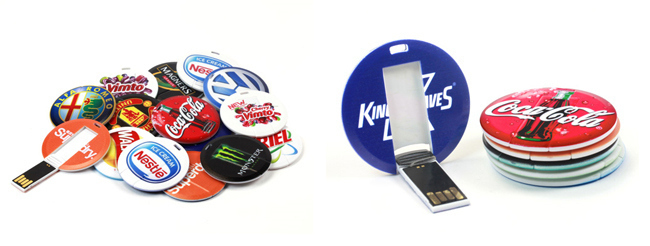From Cloth Badges to USB Button Badges
Button Badges have been with us since 1896 when they were first introduced by a New Jersey company called Whitehead and Hoag. The first version was more of a “patch” type of affair that was sewn onto jackets and was typically used by the Military to identify the rank of a solider. Some were affixed to a metal back plate to give them rigidity and an easier way of affixing them to clothing.
Everything changed when John Wesley Hyatt invented “celluloid” and realised it could be printed and/or stamped. Whitehead and Hoag spotted the opportunity and quickly moved to use celluloid on their badges and the Button Badge as we know them today was born.
Instead of cloth a very thin sheet of celluloid was applied over a printed paper design giving the effect of the traditional enamel badge but the “new” button badges were considerably cheaper to produce- all that was needed was a printed image and a thin sheet of celluloid to cover it. A pressed metal shell was produced and a simple machine used to press the paper, celluloid and shell together. Finally a metal ring and pin was clipped into the back of the badge so that it could be fixed to an item of clothing.
The new “Button Badge” was pretty much an overnight success with over 1 million being sold in the year after their release.
Button badges made their way to the UK in 1897 when they were used to celebrate the diamond jubilee of Queen Victoria. Being cheap they were a great way for the general public to express their support of the queen and of course they made excellent souvenirs.
The UK’s love of button badges has waned at times but during the 1960s and 70’s they were popular with students, hippies and musicians and who often wore them as a symbol of protest or as an affiliation to a particular band or movement.
Whilst the humble button badge is still popular it is not produced in the vast numbers it used to be but, a new USB version, looks like it might inject some oomph back into the button badge market.
USB button badges look like a standard badge, they come supplied with a clip or pin clasp but unlike traditional badges a USB badge can be printed on both sides. But, what really makes a USB badge stand out is that tucked discretely inside the badge is a fully fledged USB memory sticks capable of storing up to 16GB of data! – the USB connector simply “flips” out of the badge and is then used like any standard USB stick.
USB badges are therefore ideal for companies looking for an innovative promotional give-away because the badge can be worn and the USB memory in the badge cab also be pre-loaded with tons of information (brochures, videos, price lists, etc.) – a brilliant option for seminars, conferences, university open days etc.

